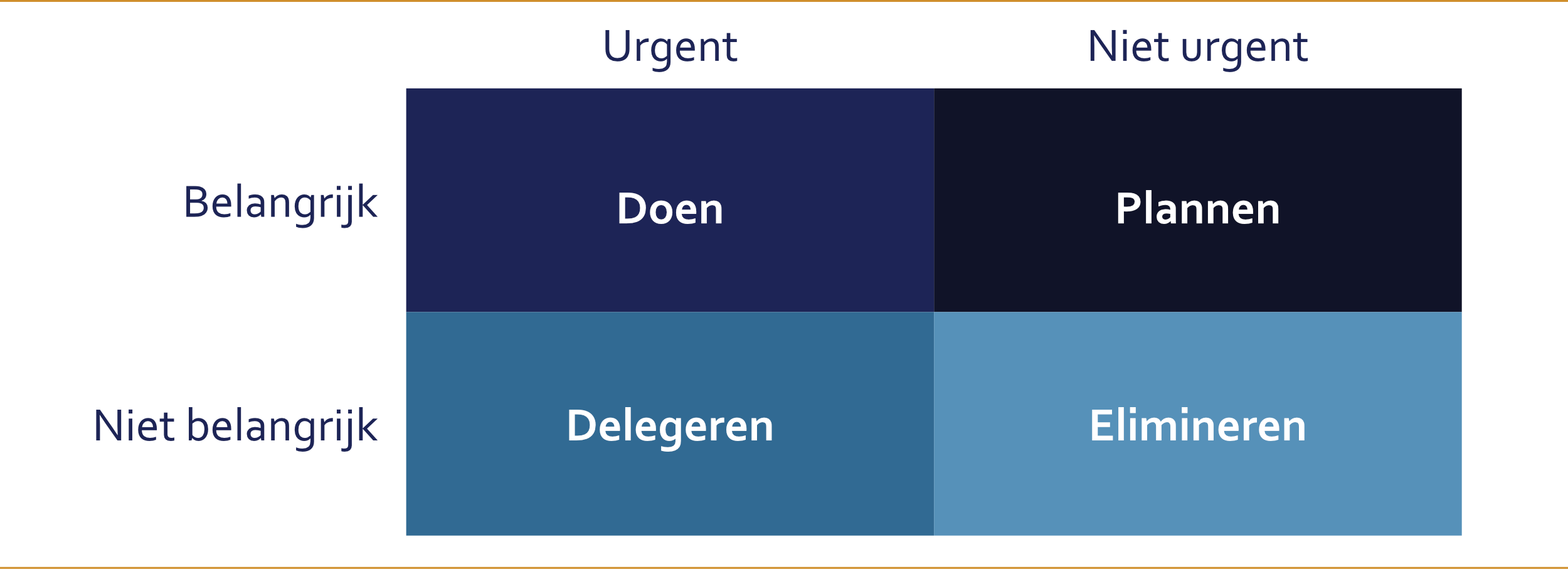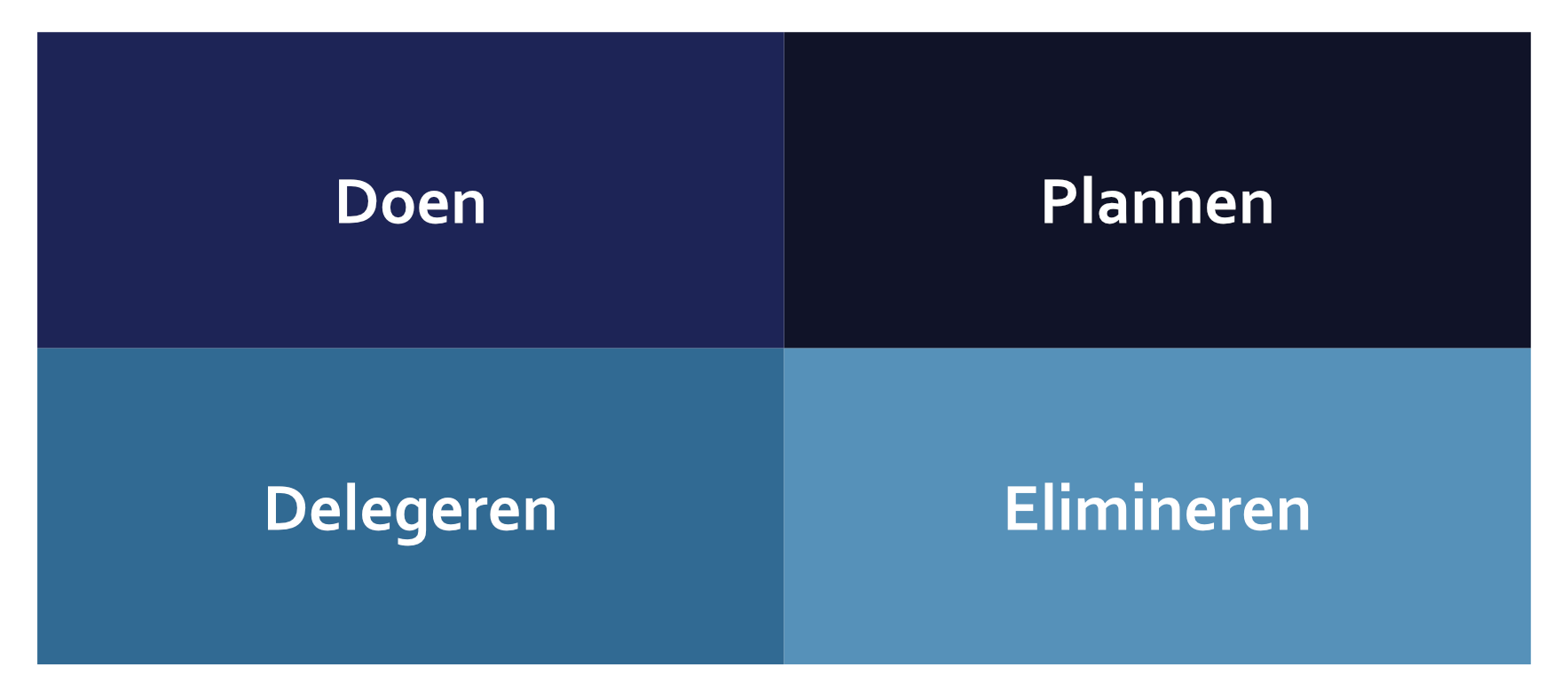The Eisenhower matrix is a widely used tool for increasing personal productivity. Stephen Covey, for example, uses it in his bestseller “The 7 Habits of Highly Effective People”. But the matrix is also relevant for organizations that strive for more productivity.
Importance and urgency
The matrix distinguishes between two types of actions:
- Important and not important actions
- Urgent and non-urgent actions
Actions that are important contribute to a strategy in the OGSM and thus to the realization of the objective. Actions that are not important do not, they are not in line with the strategies.
Actions that are urgent must be taken up as soon as possible, they cannot be left behind. Actions that are not urgent can wait and can therefore be planned.
Eisenhower matrix: four quadrants of actions
The Eisenhower matrix combines the possibilities into four quadrants. Each with advice on how to deal with the actions in the quadrant. We explain these quadrants below.

Not important and not urgent: eliminate
This quadrant is simple: actions that are not important and not urgent do not belong in the OGSM. Are they in it? Eliminate, because they take up valuable time.
Not important, but urgent: delegate
This quadrant is treacherous. These actions are, for example, the spontaneous ideas, the questions that suddenly end up on your plate, or the actions that you (as a team) do because it has grown that way. The time pressure makes you feel that such an action is important and you run and fly to get it done.
Always consider carefully whether an action fits your strategies. If not? Delegate it to a team for whom the action is important. Dare to say no!
Important and urgent: do it
At first glance, the most important quadrant: important and urgent, that should contain most of the actions. We tend to focus on actions that are urgent. But that is a reactive attitude that can cause stress. The challenge is to get ahead of the urgency. You do this by properly planning the actions in the last quadrant, from a proactive attitude.
If you notice that many actions are in this quadrant, you have to ask yourself whether you have the peace and space (both in time and in the minds of team members) to come up with a good plan. Make sure the most important actions are completed first.
Important and not urgent: planning
This quadrant should form the core of the OGSM and your daily work. Have a clear plan, think ahead and prevent actions from becoming urgent. By putting the actions in a plan and linking them to a deadline, you prevent them from being left behind. An OGSM containing important and non-urgent actions provides balance and control. In other words: more grip.


